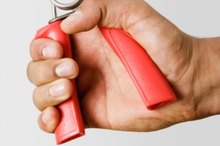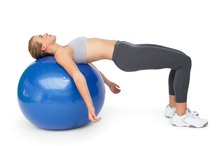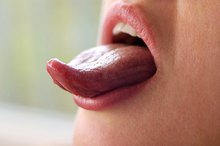What does fact checked mean?
At Healthfully, we strive to deliver objective content that is accurate and up-to-date. Our team periodically reviews articles in order to ensure content quality. The sources cited below consist of evidence from peer-reviewed journals, prominent medical organizations, academic associations, and government data.
The information contained on this site is for informational purposes only, and should not be used as a substitute for the advice of a professional health care provider. Please check with the appropriate physician regarding health questions and concerns. Although we strive to deliver accurate and up-to-date information, no guarantee to that effect is made.
Simple Exercises to Cure Your TMJ Permanently
Temporomandibular joint disorder (TMJ) is a jaw disorder involving the muscles that control jaw movement. The temporomandibular joint is one of the most complex in the body, and disorders arise when there is an imbalance in the working relationship of the jaw and skull with the muscles that move the jaw 1. However, several simple exercises can strengthen these muscles and ease the pain and discomfort associated with TMJ 34.
If you are experiencing serious medical symptoms, seek emergency treatment immediately.
Possible Causes and Symptoms of TMJ Disorders
Temporomandibular joint disorders are often simply referred to as “TMJ,” even though the term TMJ only refers to the jaw joints themselves 1. TMJ disorders can be caused by blunt trauma to the face, orthodontic work or more subtle traumas like clenching or grinding of teeth 1. Even cradling your phone between your shoulder and head can trigger TMJ symptoms. Symptoms can include clicking and popping sounds in the jaw when opening or closing the mouth, limited movement in or locking of the jaw and pain in the jaw, face or neck.
Exercise 1
Physical Therapy Exercises After Hand Surgery
Learn More
Bite your teeth together and look in the mirror at the position of your central incisors on your lower jaw. Watch these teeth and open your mouth slowly. Attempt to keep your lower jaw centered as you open. Repeat 10 times.
- Bite your teeth together and look in the mirror at the position of your central incisors on your lower jaw.
Exercise 2
Cup your palm under your chin and open your mouth slowly. Provide gentle resistance to your mouth opening. Repeat 10 times.
Exercise 3
Can the Temporalis Muscle Be Strengthened?
Learn More
Open your mouth about one inch from a clenched bite. Move your lower jaw as far to the right and then to the left as is comfortable without opening more. Repeat 10 times for each side.
- Open your mouth about one inch from a clenched bite.
- Move your lower jaw as far to the right and then to the left as is comfortable without opening more.
Exercise 4
Close your teeth gently against each other and place the tip of your tongue on the roof of your mouth right behind your front teeth. Keep your teeth closed and run the tip of your tongue backward along the roof of your mouth until your reach your soft palate. Slowly open your mouth and keep your tongue on the roof. Stop opening when your tongue leaves the roof, you have any pain or you hear clicks and pops. Hold this position for a few seconds and then relax. Repeat once or twice per day.
- Close your teeth gently against each other and place the tip of your tongue on the roof of your mouth right behind your front teeth.
- Keep your teeth closed and run the tip of your tongue backward along the roof of your mouth until your reach your soft palate.
Related Articles
References








